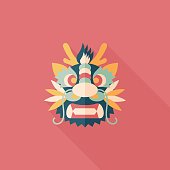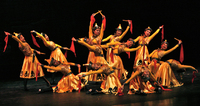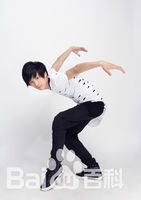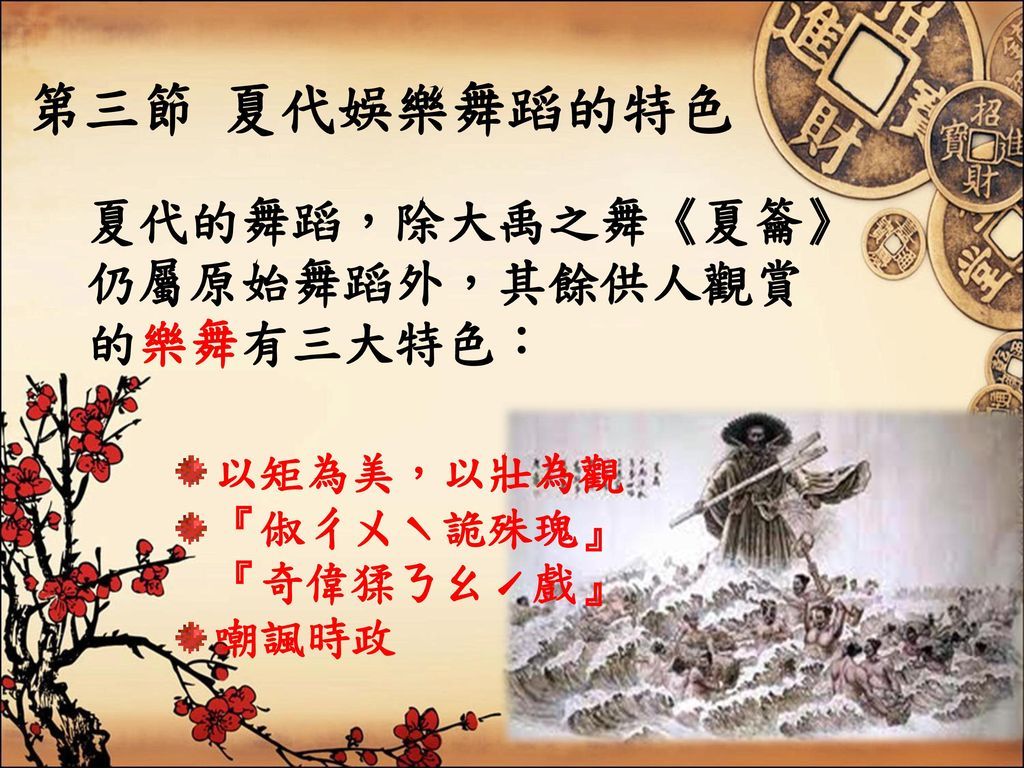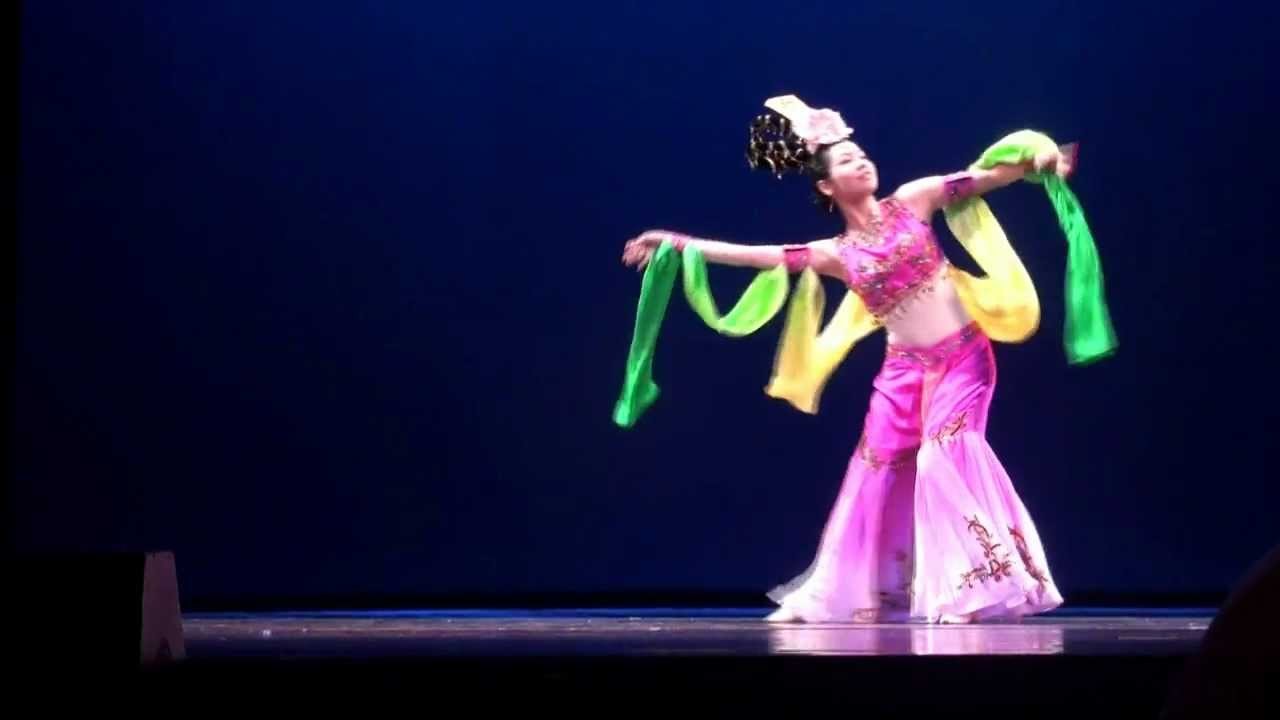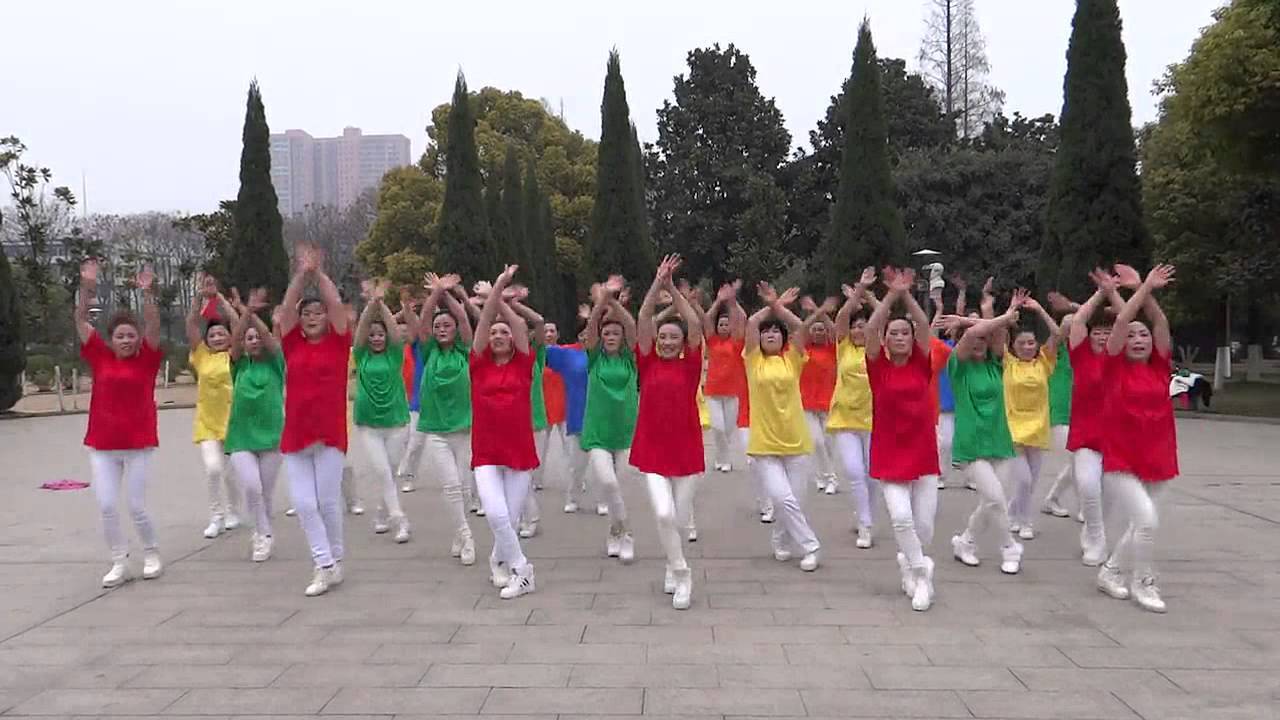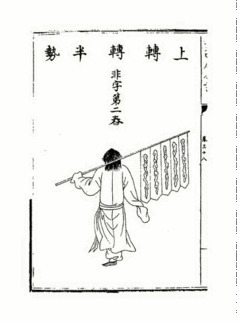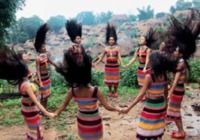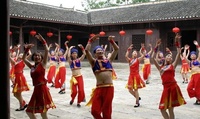| Chinese waist drum dance | Chinese waist drum dance | dance | cultural dance |
|
|
Type:dance Subject:cultural dance |
Description:The waist drum dance is at least 1000 years old. It originated in Shanxi province, where it is thought to have been performed by soldiers to sound alarms and for daily recreation. Today it is performed at the Spring Festival and the Lantern Festival. The waist drum dance is basically playing drumsticks, formation changes, and leaping while beating the waist drum. [show more]
|
|
| Chopsticks Dance | Chopsticks Dance | dance | Cultural dance |
|
|
Type:dance Subject:Cultural dance |
Description:Wide spread in Erdos, Inner Mongolia, the Chopsticks Dance is often seen on festive or celebrative feasts with only one man as the dancer. Holding a bunch of chopsticks in one hand or two hands, the dancer remains on the same spot, shaking his shoulders quickly, along with the bending and stretching of legs and rocking of a body. In a relaxed and smooth manner, the dancer clapping his own hands, shoulders, waist and legs, etc. by chopsticks and then proceeds in a circle or goes forward and backward in a straight line. The dance's posture and movements are unrestrained and nimble; the ways of clapping chopsticks are flexible and varied. Reaching the climax, the dancer will be shouting while he is dancing to add to the fun. [show more]
|
|
| Crane Dance | Crane Dance 鹤舞 | | Traditional Dance of the Korean nationality |
|
|
Subject:Traditional Dance of the Korean nationality |
Description:"Crane Dance" was originally a form of interspersed performance in the "Wu Fang Chu Rong dance(五方處容舞), which is a kind of the large court dance. During the Li Dynasty, the crane dance had a new change in performance: the two cranes danced around the two lotuses and it became the independent dance named "Crane stand on the Lotus ". The crane dance has been introduced to China for a hundred years. It has been re-processed and organised by folk artists to make it more perfect and popular among the people. It is deeply loved by the masses. [show more]
|
|
| Daxia | Daxia 大夏 | | Chinese cultural dance |
|
|
Subject:Chinese cultural dance |
Description:Daxia is part of the yayue traditional dances in ancient China. This dance is made in honour of Yu the Great and venerates the mountains and rivers. Before Yu the Great, there were accounts on the substandard conditions people had to live in. After the rule of Yu the Great and he helped cure the water crisis, people performed Daxia in honour of his work. [show more]
|
|
| Dragon dance | Dragon dance 舞龍 | Dance | Cultural dance |
|
|
Type:Dance Subject:Cultural dance |
Description:The dance is performed by a team of experienced dancers who manipulate a long flexible figure of a dragon using poles positioned at regular intervals along the length of the dragon.
|
|
| Dunhuang dance | Dunhuang dance | | Chinese cultural dance |
|
|
Subject:Chinese cultural dance |
Description:Dunhuang dance celebrates the beautiful and elaborate murals that cover the Mogao caves. As a major stop in the trading road, Dunhuang fresco had a complex system of Buddhist caves (Mogao caves) and a wondrous cache of art and literature.
|
|
| Exercise dance | Exercise dance Square dance 广场舞 | dance | cultural dance |
|
|
Type:dance Subject:cultural dance |
Description:Unlike other cultural dance, this dance can be commonly seen in parks in residential areas. Although the Exercise dance can be traced back to the ancient China, it was in the 1990s when it developed its modern sense. The dance is mostly danced by retired women, who has lots of extra time. Thus, partly for cheap exercise, these women dance in squares in the parks. The dance moves are very easy to follow and repetitive that foreigners and other locals may also join in with the women and dance together in a square. [show more]
|
|
| Five-Colour Silk Dance | Five-Colour Silk Dance 帗舞 | | Chinese cultural dance |
|
|
Subject:Chinese cultural dance |
Description:Being a traditionally agricultural society, the Chinese focuses a lot on having good harvest. The Five-Colour Silk Dance is performed for the worshipping of Earth and Grain Gods, aiming to generate a lot of food for themselves. The name of this dance is originated from the five-colour silk tied to a pole used during performance. [show more]
|
|
| Hair Dance | Hair Dance 甩發舞 | | Traditional dance of the Va nationality
Cultural dance |
|
|
Subject:Traditional dance of the Va nationality
Cultural dance |
Description:The dance is a self-entertainment dance for the Va nationality(佤族) Unlike other dances, the dance will not be performed after sacrifices, death, moving into new houses, weddings and celebrations. However, in other situations, you can dance this dance on any occasion. It is said that the dance is original from the Gaoshan nationality(高山族). In the past, there is a custom that women only dance it in the night. [show more]
|
|
| Hand Swaying Dance | Hand Swaying Dance 擺手舞 Waving hand dance | | Traditional Dance of the TuJia nationality
folk dance |
|
|
Subject:Traditional Dance of the TuJia nationality
folk dance |
Description:Hand-waving is an ancient traditional dance of the Tujia nationality(土家族).It had a total of four sections. Now the Enshi(恩施) Tujia and Miao Autonomous Prefecture(苗族自治州) has a new version of the Hand Swaying dance, which is easier to learn and pass on.
The Hand Swaying dance is a combination of Big and Small swinging hands. Small swinging hands is called "Sevbax" or "Sevbaxbax"in the Tujia language while big swinging hands, is called Yevtixhhex . It combines dance art and physical fitness. And it is known as the “Oriental Disco”.
[show more]
|
|
